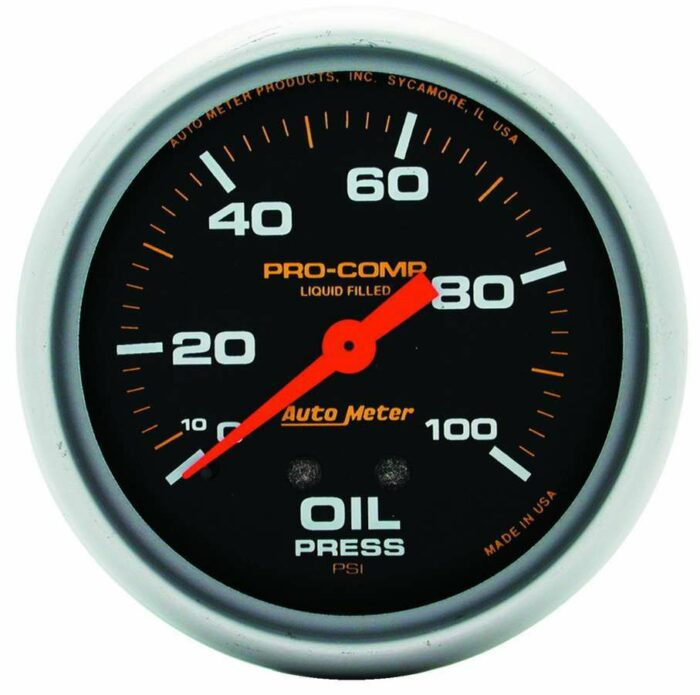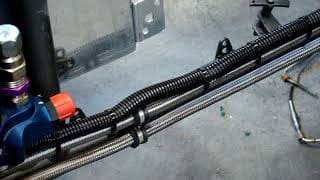Outline
- Introduction
- The Early Days: Foundations of Safety in Motorsports
- Innovations in the 1960s and 1970s: A New Era of Safety
- The 1980s and 1990s: Technological Advances and Regulation Changes
- The 21st Century: High-Tech Solutions for Improved Safety
- The Future of Motorsport Safety
- Conclusion
Introduction To Motorsports Safety
Motorsports, a realm where innovation in speed and human endurance are constantly tested, has always been shadowed by the inherent dangers of high-speed competition. However, this relentless pursuit of speed is matched by an equally vigorous pursuit of safety. Over the years, motorsport has served as a crucible for safety innovations, transforming not only the sport itself but also influencing automotive safety standards globally. This article traces the pivotal milestones in the evolution of safety technologies in motorsports, from its rudimentary beginnings to today’s high-tech solutions.
The Early Days: Foundations of Safety in Motorsports
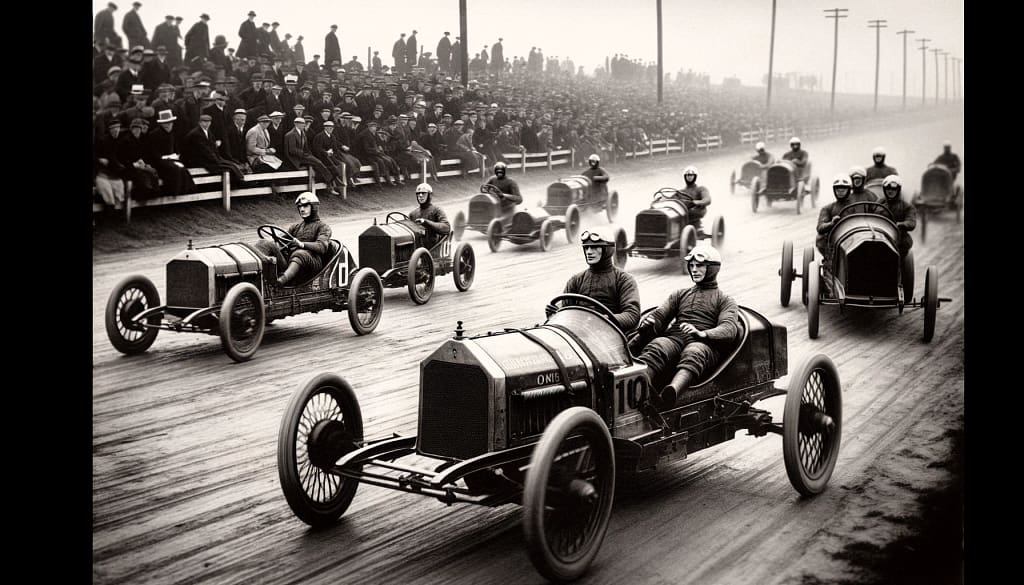
The dawn of motorsport safety was marked by minimal protective measures. Initially, drivers relied on leather caps and goggles for protection, which offered minimal defense against the hazards of high-speed racing. This era of motorsport was characterized by a stark acceptance of the risks involved, with safety considerations taking a back seat to performance and thrill-seeking.
As the sport evolved, the introduction of roll bars represented a significant advancement in vehicle safety. These structural enhancements were designed to protect drivers in the event of a rollover, a common hazard in the early days of racing. The implementation of roll bars marked the beginning of a shift towards a more safety-conscious approach in motorsport vehicle design.
The development of fire-resistant clothing offered another critical layer of protection for drivers. Before this innovation, drivers were at significant risk of burn injuries due to the flammable materials used in vehicles and racing attire. Fire-resistant suits, gloves, and boots became standard gear, drastically reducing the severity and frequency of burn injuries among drivers.
Innovations in the 1960s and 1970s: A New Era of Safety
The 1960s and 1970s heralded a new era of safety in motorsports, characterized by significant technological innovations and a heightened focus on protecting drivers. This period saw the introduction of the HANS device, a revolutionary piece of safety equipment designed to prevent neck and spinal injuries during crashes. Its adoption marked a major advancement in driver safety, addressing one of the most critical aspects of motorsport injuries.
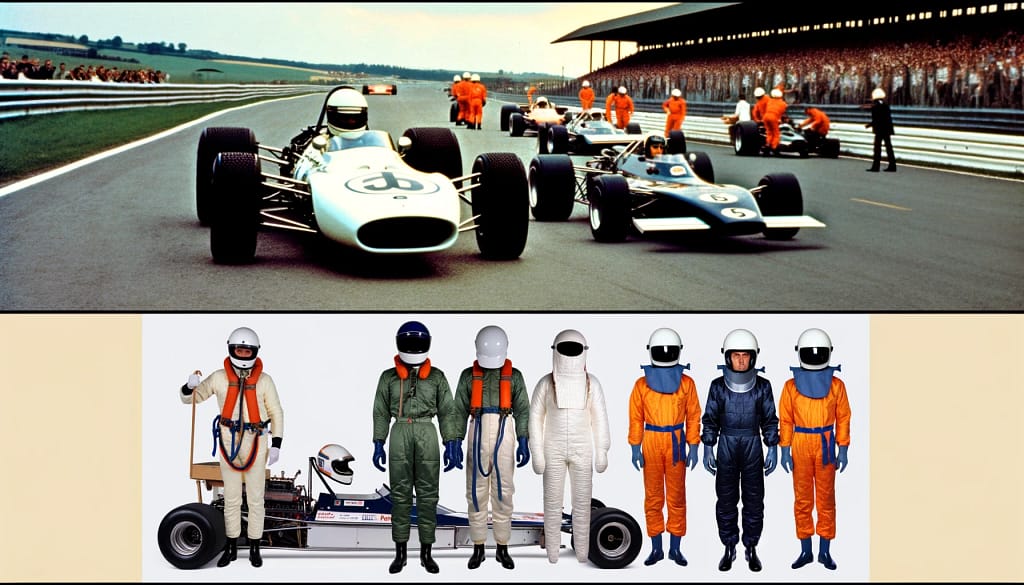
During this era, the development of fire-retardant racing suits significantly enhanced driver protection against burns. These suits, made from advanced materials capable of withstanding extreme temperatures, became an indispensable part of a racer’s safety gear. This innovation not only improved safety for drivers but also highlighted the sport’s evolving approach to risk management.
The implementation of crash barriers and improved track designs also played a crucial role in enhancing safety during this time. These measures were aimed at reducing the likelihood of accidents and mitigating their impact when they did occur. The redesign of tracks to include runoff areas and the introduction of barriers capable of absorbing the force of impacts were instrumental in protecting both drivers and spectators.
The 1980s and 1990s: Technological Advances and Regulation Changes
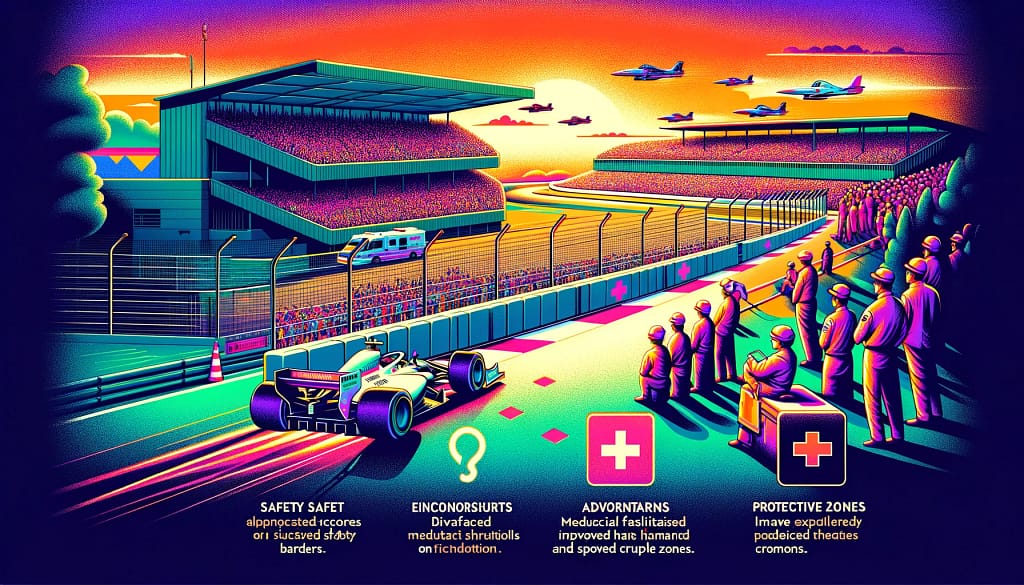
The 1980s and 1990s marked a period of significant technological advancement and regulatory changes in motorsport safety. The adoption of carbon fiber chassis revolutionized vehicle design, offering unprecedented levels of protection and performance. This lightweight, yet incredibly strong, material significantly improved the safety and durability of racing vehicles, marking a major leap forward in motorsport engineering.
The introduction of the Safety Car, or Pace Car, was another pivotal development during this time. Its role in managing the pace of the race during incidents helped prevent further accidents, ensuring a safer racing environment. The Safety Car became an essential tool in race management, allowing for more controlled responses to on-track emergencies.
This era also saw the implementation of stricter regulations for helmet and seatbelt designs, further enhancing driver safety. Helmets underwent significant improvements in design and materials, offering better protection against head injuries. Similarly, advancements in seatbelt technology, including the adoption of six-point harnesses, provided drivers with superior security within the cockpit, greatly reducing the risk of injury in high-impact collisions.
The 21st Century: High-Tech Solutions for Improved Safety

Entering the 21st century, motorsport safety has benefited from a surge in technological innovations. Advanced telemetry systems now allow teams to monitor vehicle and driver conditions in real time, providing invaluable data for preventing accidents and responding effectively to emergencies. This technology represents a significant advancement in the sport’s ability to safeguard participants.
The use of virtual safety cars and advanced warning systems has further revolutionized motorsport safety. These innovations enable more precise control of race conditions, significantly reducing the risk of accidents during caution periods. The ability to manage the pace of the race electronically has proven to be a crucial development in maintaining safety on the track.
Enhanced crash simulation and testing have also played a vital role in the 21st-century approach to motorsport safety. Through sophisticated computer models and physical testing, engineers are able to design vehicles that better protect drivers in the event of a crash. This focus on preemptive safety measures has led to the creation of racing vehicles that are not only faster but also significantly safer, showcasing the industry’s commitment to protecting its participants.
The Future of Motorsport Safety
As we look toward the future, the field of motorsport safety is poised for even further advancements, driven by emerging technologies and innovative approaches to risk management. The potential integration of autonomous safety vehicles promises to enhance response times to accidents, potentially reaching scenes faster and with more precision than ever before. This development could significantly reduce the time it takes to provide medical assistance and clear hazards from the track, improving overall safety for drivers and teams.

Augmented reality helmets are another promising area of development, offering the possibility to provide drivers with real-time information about track conditions, hazards, and race dynamics directly in their line of sight. This technology could drastically improve drivers’ situational awareness, allowing for safer and more informed decision-making at high speeds.
Moreover, the use of predictive analytics in motorsport safety represents a groundbreaking shift toward preventing accidents before they occur. By analyzing vast amounts of data collected from cars, tracks, and driver performances, predictive models could identify potential risks and advise preemptive actions to avoid incidents. This approach to safety, leveraging big data and artificial intelligence, could significantly reduce the likelihood of accidents, marking a new era in proactive safety management in motorsports.
Conclusion
The evolution of safety technologies in motorsports is a testament to the sport’s relentless pursuit of advancement, not just in terms of speed and performance, but also in safeguarding the lives of its participants. From the rudimentary safety measures of the early days to the sophisticated, high-tech solutions of the modern era, motorsport has continuously innovated to reduce the risks associated with high-speed racing. These developments have not only transformed the sport, making it safer for drivers and spectators alike but have also influenced automotive safety standards worldwide. As motorsport continues to evolve, its commitment to safety innovation remains unwavering, ensuring that the thrill of racing can be enjoyed by future generations with an ever-decreasing risk.
- Mastering The Race: Racing Tire Performance Across Conditions
- Safety Gear Success In Easy Steps
- Sparco Racing Jacket
- Nitrous Oxide Systems (NOS): And Their Impact On Automotive Performance
- NECKSGEN Head And Neck Restraint
- Stroud Parachute Test


